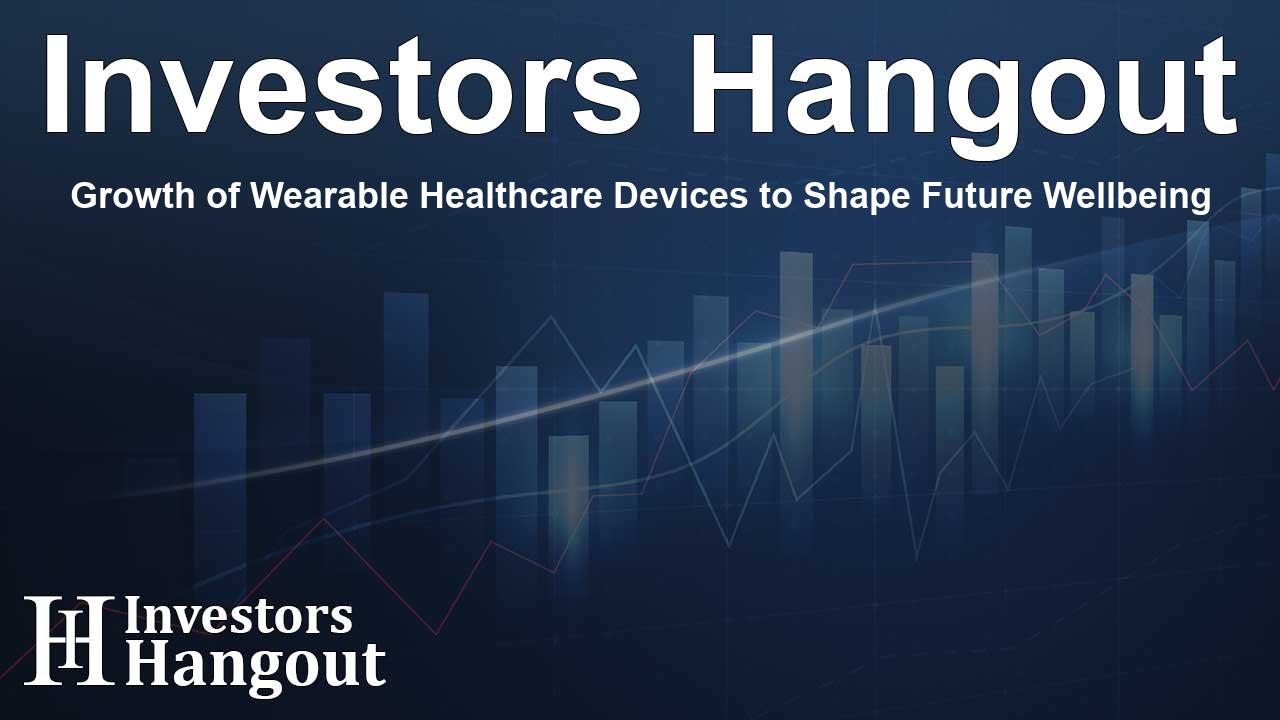Growth of Wearable Healthcare Devices to Shape Future Wellbeing

Wearable Healthcare Devices: A New Era in Health Monitoring
The wearable healthcare devices market represents a groundbreaking evolution in how health monitoring occurs globally. Current projections indicate that the market, evaluated at USD 40.92 billion recently, is poised to surge to an impressive USD 109.52 billion within the next few years. This transformational growth corresponds with an anticipated compound annual growth rate (CAGR) of 11.56%, indicating a robust demand for innovative health solutions.
Understanding Wearable Healthcare Devices
Wearable healthcare devices encompass a variety of smart, connected gadgets designed for health tracking, diagnostics, and treatment applications. Initially, the focus was primarily on tools such as fitness bands and smartwatches that tracked basic health indicators, including heart rate and step count, but the scope has expanded dramatically.
Addressing Non-Communicable Diseases
These devices are becoming pivotal in tackling non-communicable diseases (NCDs), which are responsible for approximately 74% of global deaths. There are significant cost savings associated with using wearables, especially in remote patient monitoring, potentially saving European healthcare systems up to €50.6 billion per year. The global healthcare savings could also reach an astounding $200 billion by 2040, enabling more efficient delivery of services.
Expanding Access and Enabling Research
In addition to financial benefits, wearable devices are expanding healthcare access to underserved regions, minimizing the need for in-person visits to medical facilities. They facilitate comprehensive medical research by allowing extensive, real-time data collection from a broad population. Combined with a well-structured intellectual property framework, the growth of medical wearables is expected to contribute significantly to global health advancements.
Remote Patient Monitoring and Its Impact
Remote Patient Monitoring (RPM) stands as a critical catalyst for growth within the wearable healthcare sector. The demand for devices that can track personal health parameters in real-time is on the rise as healthcare providers shift towards more patient-centric models. This shift is influenced partly by the increasing prevalence of chronic conditions and age-related health issues, necessitating more frequent health assessments. Modern wearables, including advanced health bands and smartwatches, empower users to manage their vital signs and health metrics seamlessly from their homes.
Challenges in the Wearable Market
However, the wearable healthcare market isn't without its challenges. A significant barrier to growth is the high cost associated with advanced technologies. Many consumers find premium devices unaffordable, particularly in regions sensitive to pricing. The development of cutting-edge wearable technology involves heavy investments in research and development, miniaturization, and stringent regulatory compliance, all leading to increased production costs. Features like continuous glucose monitoring and ECG sensors require expensive components, making comprehensive coverage essential for widespread adoption.
Insurance Coverage: A Growing Opportunity
As the wearable health devices sector expands, there's a growing trend toward insurance coverage for these devices. With the increasing recognition of the value that such technologies bring to preventive care and remote health management, insurance providers are beginning to adapt. This trend can significantly enhance consumer accessibility, encouraging broader adoption of wearable technologies.
Key Players in the Wearable Healthcare Market
Within the wearable healthcare industry, several key players are shaping its trajectory:
- Apple Inc.
- Fitbit (part of Google)
- Garmin Ltd.
- Samsung Electronics
- Philips Healthcare
- Xiaomi Corporation
- Medtronic
- Abbott Laboratories
- Withings
- Huawei Technologies
Recent Developments in Wearables
Innovations are continually emerging in this dynamic field. Garmin, for example, has introduced the Instinct 3 Series, known for its durability and functionality, including enhanced battery life thanks to solar-powered options.
As of July 2024, Samsung unveiled its entry into premium wearables with the Galaxy Watch Ultra and a smart ring designed to leverage AI for health monitoring. These advancements reflect a broader trend toward incorporating sophisticated technology into wearable health devices, allowing for better user engagement and health management.
Challenges and Future Insights
Despite the promising growth, challenges remain prominent. The high costs associated with developing advanced wearable technology often curtail accessibility for potential users. Moreover, ongoing advancements in technology require continued investment in R&D and adaptive regulatory measures.
Conclusion
The wearable healthcare devices market is poised for unprecedented growth, fueled by technological advancements and increasing health awareness among consumers. The trajectory is not merely about financial gains but is increasingly oriented towards enhancing individual health outcomes and providing access to preventive healthcare on a global scale.
Frequently Asked Questions
What are wearable healthcare devices?
Wearable healthcare devices are smart gadgets designed to track and manage health metrics, enabling users to monitor their well-being in real time.
What factors are driving the growth of this market?
The market is driven by rising chronic diseases, the need for remote patient monitoring, and advancements in technology that make wearables more effective and user-friendly.
Who are the key players in the wearable healthcare market?
Major companies include Apple Inc., Garmin Ltd., Fitbit, Samsung, Philips Healthcare, and Medtronic, among others.
What challenges does the wearable healthcare market face?
The primary challenges include the high costs of advanced technologies and the need for broader insurance coverage to enhance accessibility.
How might wearable healthcare devices impact global health?
Wearable devices can significantly improve preventive care, reduce hospitalization rates, and provide crucial data for healthcare research, ultimately enhancing global health outcomes.
About The Author
Contact Henry Turner privately here. Or send an email with ATTN: Henry Turner as the subject to contact@investorshangout.com.
About Investors Hangout
Investors Hangout is a leading online stock forum for financial discussion and learning, offering a wide range of free tools and resources. It draws in traders of all levels, who exchange market knowledge, investigate trading tactics, and keep an eye on industry developments in real time. Featuring financial articles, stock message boards, quotes, charts, company profiles, and live news updates. Through cooperative learning and a wealth of informational resources, it helps users from novices creating their first portfolios to experts honing their techniques. Join Investors Hangout today: https://investorshangout.com/
The content of this article is based on factual, publicly available information and does not represent legal, financial, or investment advice. Investors Hangout does not offer financial advice, and the author is not a licensed financial advisor. Consult a qualified advisor before making any financial or investment decisions based on this article. This article should not be considered advice to purchase, sell, or hold any securities or other investments. If any of the material provided here is inaccurate, please contact us for corrections.
